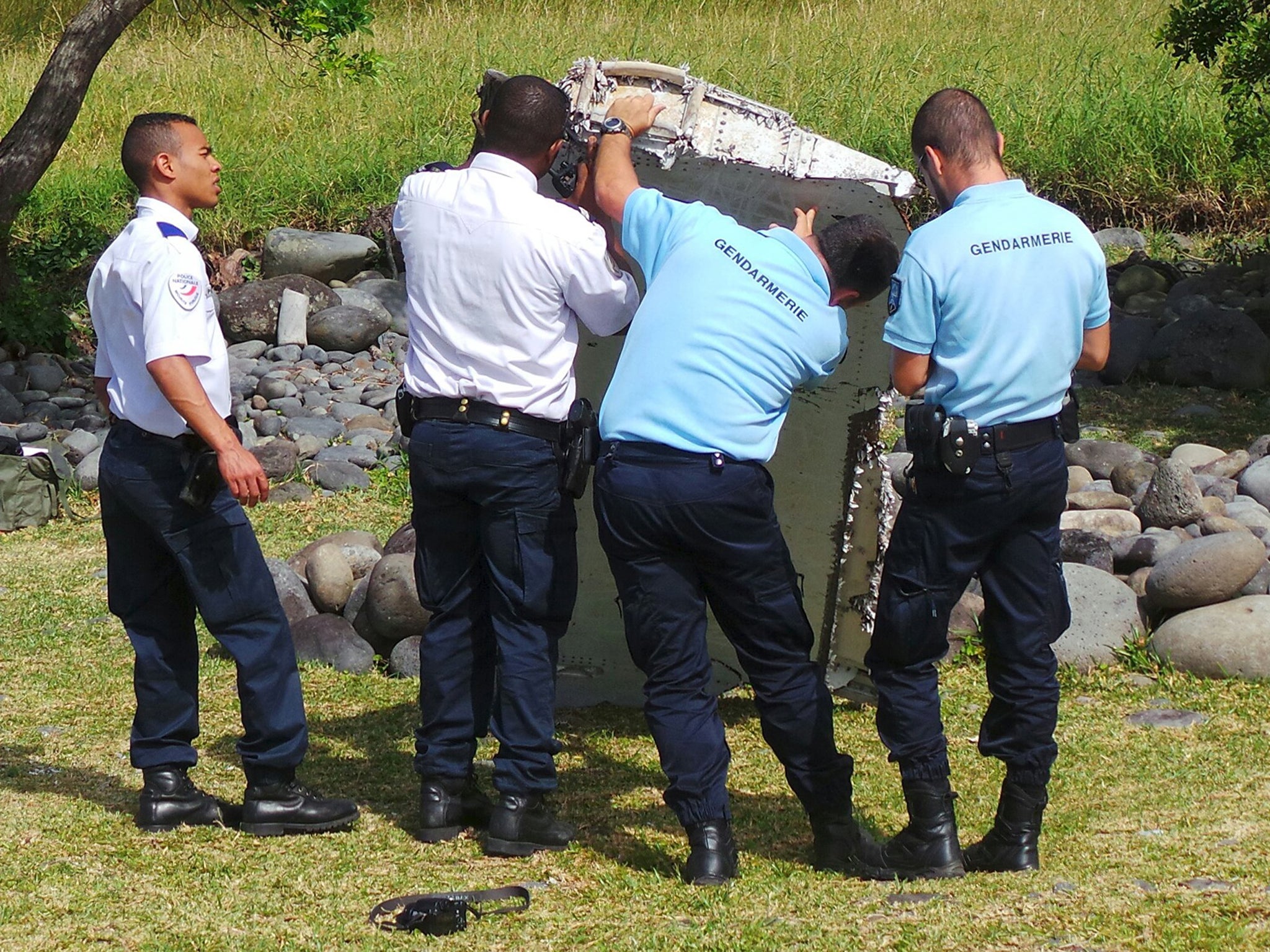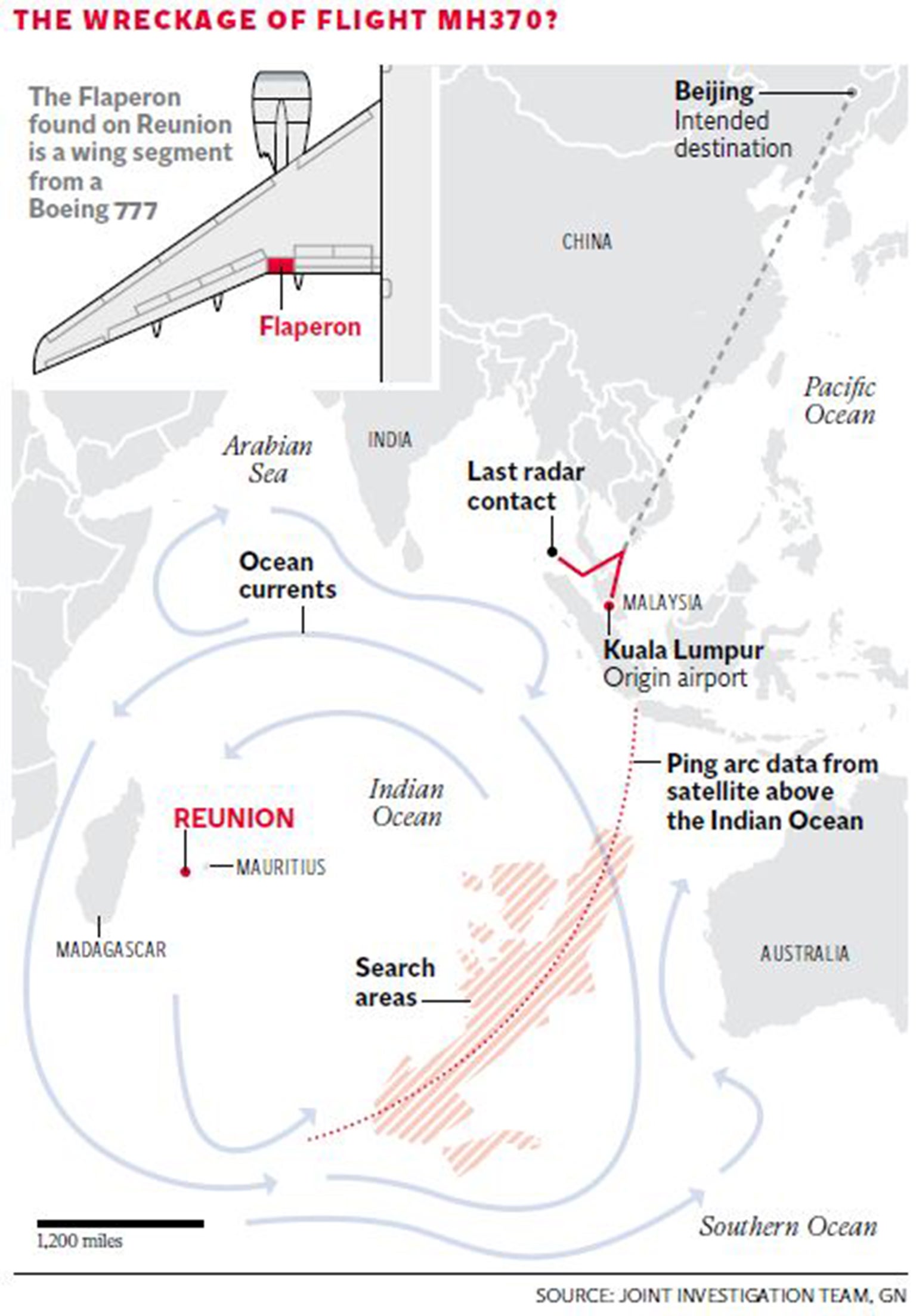MH370 debris: A breakthrough, but only when the fuselage is found will the relatives find closure
In particular, inspection of the flight deck could reveal whose control the aircraft fell under after the last contact with the rest of the world


Your support helps us to tell the story
From reproductive rights to climate change to Big Tech, The Independent is on the ground when the story is developing. Whether it's investigating the financials of Elon Musk's pro-Trump PAC or producing our latest documentary, 'The A Word', which shines a light on the American women fighting for reproductive rights, we know how important it is to parse out the facts from the messaging.
At such a critical moment in US history, we need reporters on the ground. Your donation allows us to keep sending journalists to speak to both sides of the story.
The Independent is trusted by Americans across the entire political spectrum. And unlike many other quality news outlets, we choose not to lock Americans out of our reporting and analysis with paywalls. We believe quality journalism should be available to everyone, paid for by those who can afford it.
Your support makes all the difference.The loss of MH370 is the greatest mystery in aviation history. The disappearance of the Boeing 777 on the night of 8 March 2014 has transfixed the world and triggered a spectrum of speculation.
At the heart of the tragedy are the families and friends of the 227 passengers and 12 crew aboard the plane. For 500 days the only evidence of the likely fate of their loved ones has been a series of faint satellite “pings” from the aircraft’s engines. They indicated the Malaysia Airlines aircraft flew way off its expected course from Kuala Lumpur to Beijing, and probably ran out of fuel somewhere over the southern Indian Ocean.
The relatives’ suffering has been intensified by a string of bizarre theories such as Russian special forces “stealing” MH370 on the orders of Vladimir Putin and landing it in Kazakhstan. There have also been numerous false reports of flotsam from the aircraft turning up.
Air safety experts are, by nature, cautious - and aware of the harm caused by unfounded speculation. So when accounts began to emerge on social media about a gardener on the island of Reunion finding a chunk of debris from a 777, they were initially sceptical. But photographs indicated that the wreckage was a section of trailing edge - known as a flaperon - from a large commercial aircraft.

This component, used both to extend the wing for reduced-speed flying and to assist with turns in flight, is built with airtight compartments. If undamaged, it could hold enough air to keep it at or close to the surface of the ocean.
Oceanographers believe that wreckage detached in a controlled ditching could have drifted north from the likely crash site and then been swept 2,500 miles west by the South Equatorial Current to Reunion, representing an average speed of about five miles per day.
As Reunion is part of France, the wreckage is now in the care of the BEA, the French bureau responsible for air accident investigations. The team has plenty of expertise on aircraft parts that have been under water, as a result of its painstaking search for Air France flight 447.
The BEA description of that tragedy is chillingly similar to the bare facts of the loss of MH370: “During the night of 31 May to 1 June 2009, flight AF447 Rio-Paris disappeared off the coast of Brazil, with no emergency message, no witnesses and no radar plots.”
Eventually investigators found the wreckage. They discovered that a sequence of pilot errors had caused a high-altitude stall that led to the deaths of all 228 people on board.
If the analysis of part numbers can confirm that the debris found in Reunion is from MH370, investigators will assess what clues can be found about the way the aircraft entered the water - including the likely speed and attitude of the plane when it struck the ocean.
They may also be able to predict the extent of the aircraft break-up, and thereby infer what other flotsam might be found.
Marine biologists will study the creatures that have attached themselves to the aluminium alloy, while oceanographers will seek to use records of currents over the past 16 months to reverse-engineer the likely origin of the debris. Evidence from these experts could help to refine the area, about 1,000 miles west of Australia, in which the search team is looking.
At the Australian Transport Safety Bureau, meanwhile, it is business as usual: the current phase of the search, which began almost a year ago, is currently “sweeping” the ocean floor using sophisticated equipment capable of identifying larger pieces of debris at a depth of thousands of feet.
Yet the discovery of debris in itself moves the world no closer to understanding what happened aboard MH370.
Only when the fuselage is found might the families of the victims begin to find closure. In particular, inspection of the flight deck could reveal whose control the aircraft fell under after the last contact with the rest of the world - the words “Goodnight Malaysian 370,” spoken by Captain Zaharie Shah at 1.19am on that fateful Saturday morning.
Join our commenting forum
Join thought-provoking conversations, follow other Independent readers and see their replies
Comments